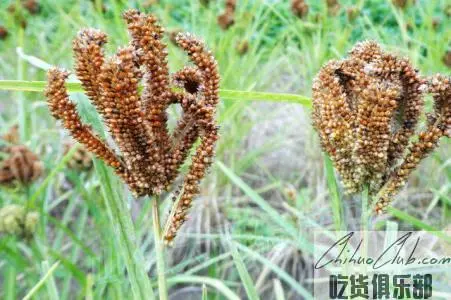
Chayu Dragon claw Millet
-
Update date::
-
Date of protection::
-
Protected range:The production area of Chayu Longclaw is the administrative area under the jurisdiction of Shangcha Town and Xiacha Town in Chayu County, Tibet Autonomous Region.
-
Related origin:
-
Category:
Dragon claws are a staple food for Africa and India. They can be used as bread and bread and porridge, as well as beer. The stalk can be basketed, capped, etc. and can be used as raw material for papermaking. Dragon claws, also known as chicken claws, ducks from the millet, African crickets, scorpions. A tropical drought tolerant cereal crop. Different places are called in China, such as scorpion, duck foot millet (Guigang City, Yulin City, Guangxi), Chicken Claw Valley (Tibet), Guangsu or Quantou (Hainan Island), Dragon Claw, Dragon Claw, Chicken Claw, Eagle Claw millet, duck claws, alkali valley, African cockroach, etc.
It is planted in places such as Mysore in India, and is planted in large quantities in Sikkim, Nepal, and Uganda in Africa. China is mainly distributed in the southern part of the Himalayas - southwest of the Hengduan Mountains (Tibet Chicken Claw Valley is mostly distributed in warm and humid areas below 2,500 meters above sea level, including Chayu, Medog, Cinna, Bomi, Geelong, Linzhi, Dingjie, Niemumu and other counties in the county, and Guigang City, Yulin City, Guangxi Province (called duck feet millet). Hainan Island (called Guangsu or fist millet): It is an ancient crop in Hainan. It used to be cultivated by land-saving crops, mainly distributed in Qionghai, Chengmai, Ding'an and Qixian, Haikou, Qiongshan, Wenchang and Qiongzhong. There are also sporadic cultivation in some township (town) farmers in cities such as Tongshi, Baisha and Lingao. Other provinces also have small crops. The dragon claws must be dense. The stalk is about 1 meter high, the leaf sheath has a ridge and the leaves are wide. Spikes 3 to 9 pieces, arranged in a finger shape on the top of the stem, often arched. Spikelets contain multiple small flowers, sessile, densely on the side of the cob. The ridges of Ying and Wai have wings. Capsule, the skin is thin and loose. The seeds are small, 1 to 1.8 mm in diameter, spherical, dark brown, and have fine mesh on the surface. The embryo is large and has a length of about 1/2 of the seed. Xenopus laevis (chromosome 2n=36) is an allotetraploid from E. indica (2n=18). According to the shape of the ear, the color of the seeds and the granules can be divided into different types such as erect and boxing, red and yellow, sputum and sputum. The yield of the box-shaped yellow grain variety is higher and the disease resistance is stronger. The dragon clawed owl is a short-day C plant with strong resistance to mites and can grow on fields where it is difficult to grow other crops. 4 In the south of the Yangtze River in China, seedlings are planted in late March and transplanted in late April. The growth period of Daejeon is about 100 days. Summer seeds are sown in early July, and seedlings are transplanted at 7-8 leaves. The line spacing is 33 to 40 cm, and the hole spacing is about 6 cm. If the seedling stage is afraid of cockroaches, the seedbed should be well-drained with good drainage and ditching. After transplanting, topdressing before heading. It can also be broadcast live, usually in late July, with a growth period of about 125 days. Due to the different maturity stages of different tillers, it is advisable to divide the ears 3 to 4 times and keep the seeds in the main ear.
Technical requirements for quality of Chayu Longclaw 1. Variety Suitable local varieties for local cultivation. Second, the scope of protection in Chayu County, Chayu Town, Xiacha Town. 3. Site conditions The soil types are yellow brown soil and yellow soil, and the texture is sandy clay loam and sandy loam. The soil organic matter content is ≥3.0%, and the pH value is 5.0-6.5. Fourth, cultivation management 1. Planting methods: seedling transplanting or live broadcast. The seeding period of seedlings is mid-May, and the seeding rate per square meter is 200-300 g. Transplanting from late June to early July, ≤1.0 million points per 667 m2, 2-3 seedlings per hole. The sowing date of direct seeding is in late June, 3-4 seeds per hole, ≤1.0 million points per 667 m2; 2. Fertilization: ≥500 kg per 667 m2 of organic fertilizer, once every two years. 3. Environmental and safety requirements: The use of pesticides, fertilizers, etc. must comply with relevant national regulations and must not pollute the environment. 5. Harvesting from late September to early October, drying naturally. Sixth, processing, miscellaneous → Shibuya → valley rough separation → rice milling → selection → classification → inspection → packaging → storage. Seven, quality characteristics 1. Sensory characteristics: spherical, dark brown, full of seeds, large embryo. 2. Physical and chemical indicators: protein ≥ 7.50%, calcium ≥ 2000.0 mg / kg. 3. Safety and other quality technical requirements: Must comply with relevant national regulations.
Apply to:
Producers within the scope of the production of the scorpion dragon claw scorpion may submit an application to the Linzhi Municipal Bureau of Quality and Technical Supervision for the use of the “Special Mark for Geographical Indication Products”, which shall be reviewed by the Quality and Technical Supervision Bureau of the Tibet Autonomous Region and reported to the General Administration of Quality Supervision, Inspection and Quarantine for approval. The inspection agency of Chayu Longclaw is selected by the Quality and Technical Supervision Bureau of the Tibet Autonomous Region in the inspection institutions that meet the qualification requirements.